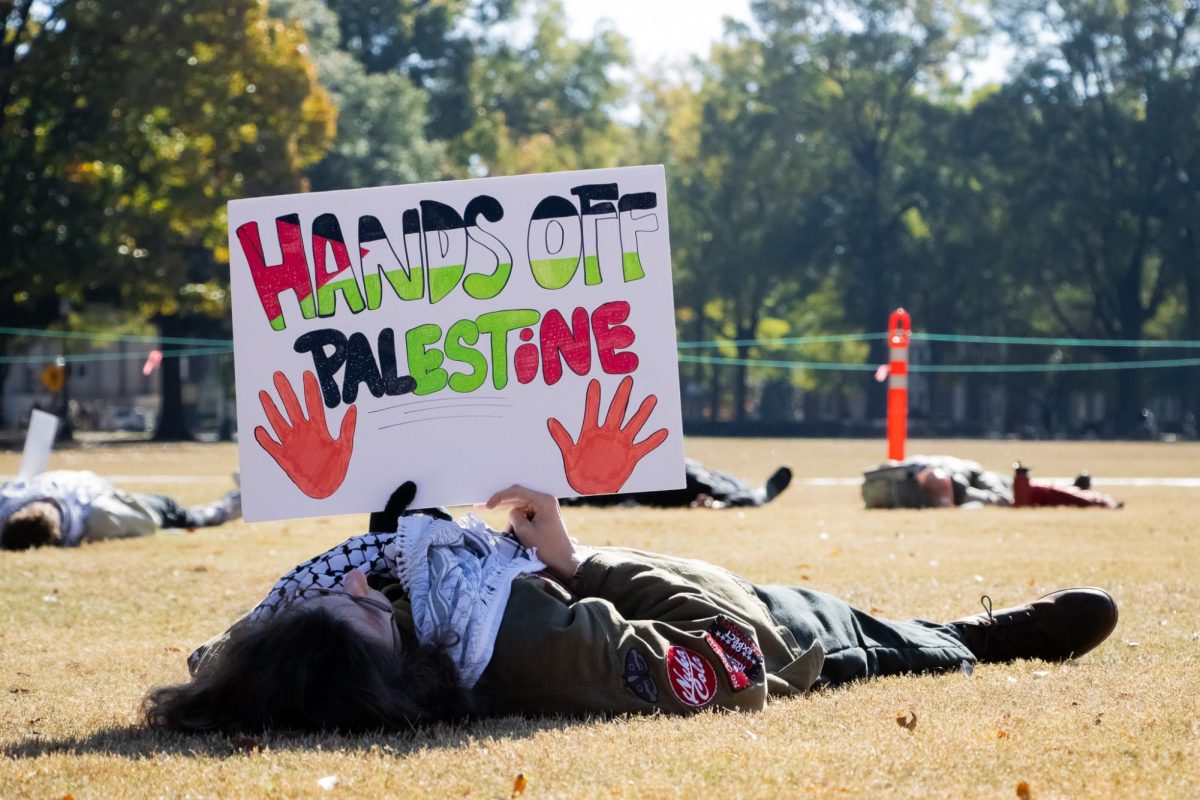On Monday, the City of Tuscaloosa provided a missing persons list—the first of its kind from the city since the storm on April 27 tore through the area.
“I don’t think we can get this list all the way down to zero,” Mayor Walt Maddox said in a Monday press conference. “I’m surprised anyone can survive the wrath of a tornado.”
According to UA spokesperson Cathy Andreen, the University of Alabama will continue to let the police and emergency responders handle the business of finding and accounting for missing persons, including possibly missing students.
“UAPD is communicating with the Emergency Preparedness Group at the University,” Andreen said.
Andreen explained that due to the mutual aid agreement between the Tuscaloosa Police Department and UAPD, the two departments are working together in conducting missing persons operations. For example, seekandfind.ua.edu – a city-run website designed to gather information about missing people – is hosted on a University of Alabama URL but operated by the Tuscaloosa Police Department.
“Efforts to find missing individuals are being handled by people who are experts in that field,” Andreen said. She also explained that the University is not planning on accounting for all students by means of an email check-in system.
The city, though, isn’t the only organization trying to account for missing persons. Andreen said the University has “encouraged [faculty] to work with their students regarding finalizing grades for the semester,” but some professors and department heads have gone beyond that duty and worked to account for students themselves.
Jim Hall, director of New College, said the University did not provide specific guidelines on how to track down students, but he thought most departments would try.
“We tracked down all 200 hundred [New College students] by Friday evening,” Hall said. “I was able to generate a list of all our majors, compile a list of people we haven’t heard from…. People texted me names of people they hadn’t seen or talked to, and we used every bit of social media we could.”
Hall said he thought the University and the city of Tuscaloosa have done a good job handling the tornado aftermath, given the scope of the crisis. He said he realized it would be harder for a group like the biology department to track down 700 students.
Becky Florence, director of college relations and associate director of development, explained that the College of Arts and Sciences—composed of roughly 9,000 students—has launched a new email account, named [email protected], to check in with Arts and Sciences students and gauge their needs in the aftermath of the storm.
“[The e-mail system] was set up to give faculty, department chairs and students a central location to get information about resources available on-campus and off-campus,” she said. Florence explained that Arts and Sciences students can ask everything from how to fill out a Federal Emergency Management Agency form to how to find housing.
“We requested the email on Friday, and we had the email set up over the weekend … and it is online now,” Florence said. “We told the [department] chairs on Monday morning, and we’re very soon going to send an email out.”
In 2005, Tulane University checked in via email with all of their students following Hurricane Katrina, according to Mike Strecker, director of public relations at Tulane. According to a report from 2004, Tulane’s enrollment at that time was just over 13,000 students.
“We did have our students check in by email after the storm,” Strecker said. “Going into it, we were pretty confident everyone had gone into it safely – there was an evacuation from the city and the University.” Strecker said this evacuation is a key difference between a hurricane and tornado – with a tornado, he said, “you don’t have a warning. You just have to get out of its way.”
Strecker said after the University accounted for its students, Tulane set up other communication tools to keep students in direct contact with the administration.
“We have an emergency website that we activated … that was a permanent thing,” Strecker said. “If we had been on campus, the president would have been meeting with the students…. In the immediate aftermath, we did it via live chats where they would ask questions virtually.”
Six years later, technology remains a useful tool for some UA professors and students hoping to account for their fellow students. In the College of Arts and Sciences, for instance, Dean Robert Olin encouraged department heads to check in with students and gauge their needs, but left the decision of how to do so up to the individual department leaders, Florence said.
“The University has a redundant communication mechanism with students,” Florence said, explaining that administrators rely on a variety of methods to contact students, like texts, emails and social media.
Shane Givens, an instructor within the Management Information Systems department, explained that his students used a Facebook group called MIS Post Tornado to find and account for each other after Wednesday’s tornado.
“That’s when [our efforts] really got organized, with the Facebook group,” Givens said. “We knew where half of everybody was by Friday and on Sunday we were able to confirm everybody.
“We did lose one student, Marcus Smith, a sophomore—they found him Sunday. Otherwise, we were able to confirm that everybody else was alive,” he said.
Givens said that other than emails from the business school to its students, he was unaware of other concerted efforts to account for students by the University.








